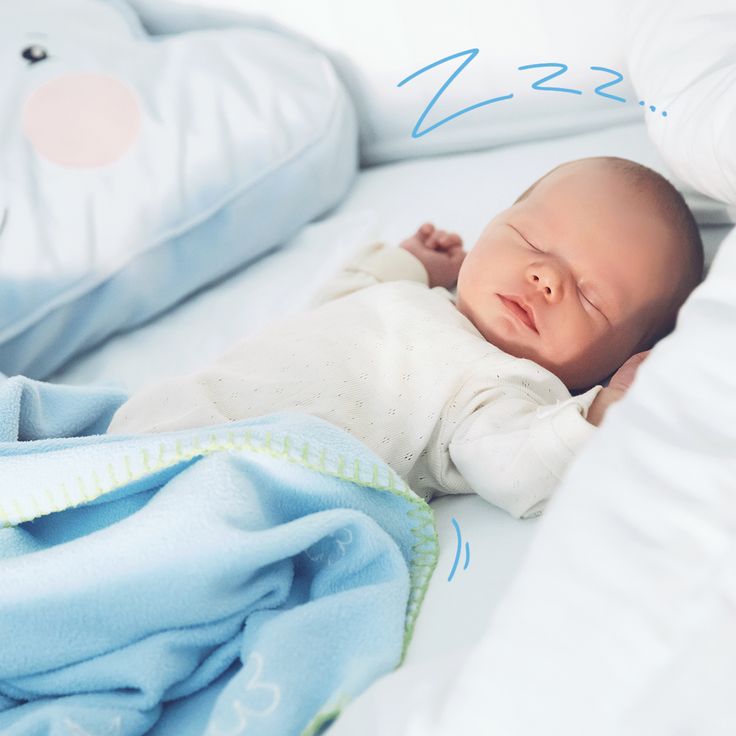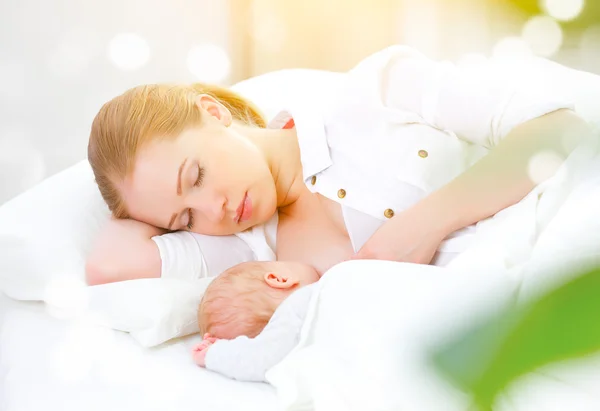Newborn baby not feeding just sleeping
Sleepy Baby – Why And What To Do
Nobody likes to disturb a sleeping baby, but sometimes a baby can be too sleepy for their own good. At times like this they may need you to take action.
Your newborn baby needs to nurse actively for one or both breast at each feed. Offer the second breast after they seem to have finished at the first, although they may not want both sides at every feed.
What makes a baby sleepy?
Recovering from birth: In the first few days, some babies are sleepy or uninterested in feeding. It’s especially true for small babies, after a difficult labour or birth, or if you received drugs for pain relief during labour.
Jaundice or an infection may make a baby sleepy. Newborn jaundice is normal but frequent breastfeeding helps prevent it becoming a problem.
Not enough milk: Your baby may sleep to conserve energy if they are not getting enough food. They may also sleep longer that is good for them if they are apart from you.
Is my baby too sleepy?
To gain weight and stimulate your milk production, expect your newborn to:
- Breastfeed effectively at least 8–12 times in 24 hours
- Feed actively from one or both breasts at each feed, swallowing regularly.
- Nurse at least every 2–3 hours from the start of one feed to the next, with one longer sleep of 4–5 hours.
- Have periods where they breastfeed on and off for several hours, usually in the evening.
- Gain weight from day 4 and regain birth weight by about two weeks.
Look at our page Beginning Breastfeeding for more information. If your baby is too sleepy to do all these things they may need your active help to ensure they are nursing effectively and getting enough milk.
Is my baby getting enough milk?
A baby may lose up to 7% of their birth weight during the first few days. From around day 3-4, expect them to start gaining, and to regain their birth weight by 10-14 days. Many breastfed babies gain around 200-235g (7-8oz) as week for the first 2-3 months. If you baby consistently gains less, or they haven’t regained their birthweight by 14 days, seek skilled help to assess whether they are getting enough milk. What comes out is a sign of what has gone in, so counting dirty nappies can be a useful guide between weighing sessions. For more information to help you know if your baby is getting enough milk in the first few days, you could read our article here about signs of effective feeding in the early days. And then after the first few days, this article will help you decide if your baby is getting enough milk.
If you baby consistently gains less, or they haven’t regained their birthweight by 14 days, seek skilled help to assess whether they are getting enough milk. What comes out is a sign of what has gone in, so counting dirty nappies can be a useful guide between weighing sessions. For more information to help you know if your baby is getting enough milk in the first few days, you could read our article here about signs of effective feeding in the early days. And then after the first few days, this article will help you decide if your baby is getting enough milk.
| Age | Dirty nappies per 24 hours |
|---|---|
| 1-2 Day | 1 or 2 greenish-black tarry meconium poos |
| 3-5 days | At least 3 green transitional poos |
| 5+ days | At least 3-5 yellow, loose unformed poos the size of a 2p coin or larger |
Remind your baby to nurse
If your baby is too sleepy or groggy to rouse themselves every few hours, you will need to wake them to feed to ensure they get enough milk. This will be easier if your baby is in a light sleep cycle: watch for rapid eye movements under their closed eyelids, arm and leg movements, sucking activity and changes in their facial expression.
This will be easier if your baby is in a light sleep cycle: watch for rapid eye movements under their closed eyelids, arm and leg movements, sucking activity and changes in their facial expression.
- Aim for your baby to feed at least 10 times in 24 hours, including at least once at night
- Encourage active nursing on the first breast, watching and listening for signs of swallowing.
- Use breast compression (see below) to keep your baby nursing actively.
- Offer the other side in the same way. You can switch back and forth several times if it helps your baby stay awake and feed.
- Encourage cluster nursing whenever your baby is more alert.
- Give expressed milk if they aren’t feeding well.
- Keep them close by—day and night—so they don’t sleep too long and you don’t miss their feeding cues.
Also try
- Dimming the lights and keeping your surroundings quiet and peaceful.
- Keeping the room temperature at around 18°C or undressing your baby a little if the room is warm.
 Being too hot can make a baby sleepy.
Being too hot can make a baby sleepy. - Unwrapping any blankets.
Newborn feeding cues
Signs of interest in feeding include:
- Mouth movements; smacking or licking his lips
- Sucking on lips, tongue, hands, fingers, toes, toys or clothing
- Rooting, head bobbing or nuzzling against whoever is holding them
- Fidgting and squirming a lot
- Fussing
- Crying – a late sign of hunger.
Do offer feed generously. A newborn won’t find it easy to feed well, if they have to wait and reached late hunger signs.
Helping your sleepy baby
Positioning and attachment
Getting a deep, comfortable latch is crucial. If your baby is not latched on well at the breast, they will have to work harder to get your milk. They may tire easily and fall asleep. Sometimes just a small adjustment to the way your baby comes to the breast can make a huge difference. An LLL Leader can provide individual suggestions tailored to your circumstances. If your breasts are engorged, gently hand express a little milk and/or ease swelling back with your fingertips to make it easier for your baby to latch on deeply and prevent you getting sore. See our longer article about Positioning and Attachment for more help on how to help your baby latch well, feed effectively and be comfortable for you.
If your breasts are engorged, gently hand express a little milk and/or ease swelling back with your fingertips to make it easier for your baby to latch on deeply and prevent you getting sore. See our longer article about Positioning and Attachment for more help on how to help your baby latch well, feed effectively and be comfortable for you.
Copyright Suzanne Tobin
Seek skilled help early on if you are finding breastfeeding difficult or uncomfortable.
Laid back breastfeeding
Try letting your baby lie on your body with their chest and tummy against you as you recline at about 45 degrees. If they can snuggle up close to your chest for periods of time, even when sleepy or during light sleep, they will often instinctively seek the breast and attach deeply and comfotably even during light sleep. This can be done skin-to-skin or with you and your baby lightly clothed. Watch for signs your baby is stirring and gently encourage feeding. Spending time relaxing like this can make a real difference to how well your baby feeds and how much milk you make. Our page on Comfortable Breastfeeding has more ideas.
Spending time relaxing like this can make a real difference to how well your baby feeds and how much milk you make. Our page on Comfortable Breastfeeding has more ideas.
Breast compression
If your baby starts to doze at the breast, this technique will help him breastfeed actively and take more milk.
- Cup your breast with your hand, near your chest wall, thumb opposite fingers in a C shape. Keep your hand well back from the nipple area.
- Wait while your baby breastfeeds actively, with their jaw moving all the way to his ear. When they stop swallowing, compress your breast firmly. They probably start swallowing again. Hold it squeezed until they stop nursing actively, then release your hand.
- Rotate your hand around your breast and repeat step 2 on different areas of the breast as needed. Go gently—this should not hurt.
Try switching breasts at least two or three times during each feed—when your baby comes off the first breast on their own or when breast compression no longer keeps them breastfeeding actively.
Express milk for your baby
Until your baby gets the hang of feeding you may need to do some work for your baby. If they aren’t latching at all, or is not feeding well and gaining weight, then expressing your milk will help establish milk production. The earlier you start, the sooner you’ll produce plenty of milk. Hand expression is often easiest at first but when your milk comes in combining hand expression with pumping can be most effective.
Giving expressed milk
First, encourage your baby to nurse at both breasts. Watch for swallowing and use breast compression an switch nursing until they stop drinking and start to doze.
Next, give your baby expressed milk until they have had enough. (For more on how to give additional milk, our article here). Giving your baby your expressed milk after breastfeeding can help them overcome sleepiness and feed more effectively next time.
Then, once your baby has settled, express from both breasts switching back and forth and using compressions and hand expression to get the available milk. Store this milk in the fridge ready for the next feed.
Store this milk in the fridge ready for the next feed.
Aim to complete this process within about an hour.
Avoid bottles and dummies
You can give small amounts of expressed milk using a spoon, flexible feeding cup or syringe. If you decid to use bottles for larger amounts, you can give the bottle in a way that helps protect breastfeeding. For more information on ways to give your baby milk and bottles see our article on Bottles and other tools. An alternative is to use a nursing supplement: this acts like a straw to deliver extra milk through a tube along your breast as your baby nurses, avoiding the need for bottles. Our article Nursing Supplementers explains more.
Don’t give up too soon
If your baby doesn’t respond quickly to your efforts to get him to breastfeed more often and more effectively, don’t give up. Keep your baby fed, Keep your supply protected and Keep your baby close. You may find our article on Getting breastfeeding back on track after a tricky start helpful. Check with your doctor to eliminate any medical reasons and contact your local LLL Leader to find one-to-one breastfeeding help. You can find support and encouragement from breastfeeding mothers in your local LLL Group too.
Check with your doctor to eliminate any medical reasons and contact your local LLL Leader to find one-to-one breastfeeding help. You can find support and encouragement from breastfeeding mothers in your local LLL Group too.
Written by mothers of LLLGB. Photos courtesy of Ellen Mateer and Suzanne Tobin.
Further Reading
Comfortable Breastfeeding
Positioning and attachment
Engorged Breasts – Avoiding & Treating
Hand Expression of Breastmilk
Is my baby getting enough milk?
My Baby Needs More Milk
Nursing supplementers
Jaundice in Healthy Newborns
Getting back on track after a tricky start – the Three Keeps
My baby won’t breastfeed
Bottles and other tools
Other websites
Biological Nurturing™: www.biologicalnurturing.com/video/bn3clip.html
Natural Breastfeeding Position video, Nancy Mohrbacher:
Benefits of skin-to-skin contact: www.kangaroomothercare.com
Books
The Womanly Art Of Breastfeeding. LLLI, London: Pinter & Martin, 2010
LLLI, London: Pinter & Martin, 2010
This information is available to buy in printed form from our shop.
Copyright LLLGB 2020
Updated June 2022
Signs of effective feeding in the early days
Most babies are keen to feed in the first 90 minutes after they are born especially if they are in skin-to-skin contact with their mum.
If your baby is too sleepy to take this first feed or needs medical attention, it’s a good idea to ask your healthcare team to show you how to hand express and give the colostrum by teaspoon or syringe. He may sleep for a few hours after this first feed – feel free to cuddle him and wake him if you want to feed. He may feed four to five more times in the first 24 hours.
After that first 24 hours we know that babies who are getting adequate amounts of milk will wake to feed at least eight times over a 24-hour period (10 to 12 times being more likely) so it is valuable to keep an eye on numbers and offer feeds even if the baby does not seem to be actively asking.
Babies need to feed frequently; this encourages your milk to increase in volume. Once your milk is coming in, after about 48 hours or so, you may hear your baby swallowing. You may also notice that your breasts feel fuller and that after your baby has fed they soften a little.
Babies who are excessively sleepy, reluctant to wake or who only wake briefly and suckle for very short times will need some extra milk, and your colostrum is best. Learn how to hand express and give your expressed colostrum frequently, until your baby is waking, keen to latch and is doing active sucking and swallowing, with pauses.
Your baby will be content and satisfied after most feeds and will come off the breast on his own. A period of cluster feeding each day (or night) is common. When a baby is cluster feeding he may be very keen to breastfeed a lot and not want to settle to sleep for three or four hours.
However, if you feel he is never really satisfied after feeds, trust your instincts: some expressed milk might help. Seek help with positioning and attachment so that your baby can learn to extract milk efficiently himself.
Seek help with positioning and attachment so that your baby can learn to extract milk efficiently himself.
You can get support from LLL here.
These videos may help with positioning and attachment:
https://www.youtube.com/watch?v=wjt-Ashodw8
https://vimeo.com/11692547
There are more videos along with images and descriptions in our post: Positioning & Attachment
Keeping an eye on his nappies can help you know if he is getting enough milk
Poos
At first poo is sticky, black, and almost tar like. This will become greenish, less sticky, and wipe off your baby’s skin easier! By day three/four you will notice the poo change colour to mustard yellow, and it will be soft and seedy. Two or more of these poos every 24 hours are a sign your baby is getting enough milk in the early days. After three full days (72 hours) your baby should produce at least three poos per day.
By five to six weeks your baby will develop his own pattern and may go days without a poo. Providing he is gaining weight ok, poos are no longer as important for being confident he is getting enough milk.
Providing he is gaining weight ok, poos are no longer as important for being confident he is getting enough milk.
Wees
At first your baby may not pass much urine but this increases each day. If you have had extra fluids during labour and birth your baby may produce extra urine for the first 24 hours or so. By day two look for two wet nappies over 24 hours, days three and four look for three or more wet nappies each 24 hours. By the time your baby is five days old, wet nappies should be more frequent, usually six or more over 24 hours. If your baby’s urine output is less than this or you see red/orange specks in your baby’s nappy, (these are called urates) your baby could do with some more milk.
It can be tricky to tell if disposable nappies are wet – after five full days, when copious milk comes in, they should be heavy.
Many disposable nappies have a faint line down the middle of the nappy which changes colour when wet.
If you are worried your baby isn’t getting enough milk, consider hand expressing your milk. You can feed the expressed milk by teaspoon, cup or directly into his mouth. With some extra milk your baby will generally start to wake more and feed more actively. If you are concerned that your baby isn’t well contact your midwife or GP.
You can feed the expressed milk by teaspoon, cup or directly into his mouth. With some extra milk your baby will generally start to wake more and feed more actively. If you are concerned that your baby isn’t well contact your midwife or GP.
There is more information in these posts:
Is my baby getting enough milk?
My baby needs more milk
Breastfeeding concerns
Occasionally there is reason to be concerned about a baby’s weight gain or the way he is breastfeeding. Here are some signs that your baby may not be getting enough milk at the breast:
- If your baby has not regained his birth weight by two weeks of age
- If baby is passing less urine and pooing less frequently than described above, or his poos remain dark, then seek additional support and give more milk. Older babies may have bowel movements less frequently
- If baby is nursing fewer than eight to twelve times in 24 hours in the early weeks
- If baby is not waking to nurse at night
- Your baby is never satisfied after feeds
- Breastfeeding is very painful all the way through a feed
- You don’t feel signs of your milk coming in after day three
If you are concerned about your baby or s/he shows any of these signs, seek help with breastfeeding from your healthcare team and La Leche League.
Find LLL support here or call our national helpline on 0345 120 2918.
Any of the following are signs of dehydration and the need to seek medical help immediately:
- less than two wet nappies in 24 hours from the third day
- listlessness
- lethargy
- weak cry
- skin loses its resilience (when pinched it stays pinched looking)
- dry mouth, dry eyes
- the fontanel (soft spot) on the head is sunken or depressed
- fever
This list is not exhaustive and we stress that you should consult your Doctor, Midwife, Health Visitor, or other healthcare provider if you have any concerns about the health of your baby. Breastfeeding support can continue alongside any necessary medical treatment. A La Leche League Leader (breastfeeding counsellor) can provide further information on breastfeeding management. Get LLL support here.
causes, diagnosis and treatment – NEARMEDIC network of clinics
Dear patients, we apologize. Callback is temporarily unavailable. Call our telephone numbers.
Callback is temporarily unavailable. Call our telephone numbers.
Immediately after birth, a healthy baby sleeps a lot. Most of the day is spent sleeping. The rest of the time he eats. In the first days of life, the child grows up, actively gaining weight. It remains for parents to observe, admire and perform hygiene and other care procedures.
Over time, the sleep intervals are reduced, the time of wakefulness increases. A long sleep should not be alarming if the child wakes up for food, notifies you of wet diapers. But the lack of normal sleep and crying for too long after taking the usual measures serve as a signal that the baby is ill.
Frequent changes in the phases of sleep and wakefulness occur from birth to a year. Later, the schedule becomes more predictable. You can look at the newborn sleep calendar to find out what intervals of sleep and wakefulness are normal for the current period of life.
When not to worry
A healthy child, upon waking up, begins to grunt at first. These are the first signals that he wants:
These are the first signals that he wants:
- is;
- drink;
- feel parental warmth and smell;
- dry diapers.
If you immediately take the child in your arms, carry out all the usual manipulations and feed, the baby should calm down. It happens that this does not happen, and the newborn cries, refuses to eat.
One of the first causes of this behavior is intestinal colic. This is increased gas formation caused by inappropriate nutrition. Sometimes it is enough to scold the child in your arms (ideally bare belly to the warm body of the parent) or massage the tummy for the symptoms to go away. In some cases, you have to resort to special means: from medicines to medical tubes for releasing gases.
ATTENTION! These procedures are best done only after examining a doctor and recommending certain means. Self-medication can change the picture of the disease, if any, as well as cause unnecessary suffering to the child without the desired effect.
Causes of colic
Colic can occur in children who are breastfed, organized according to all WHO standards, mixed and full artificial. The reason is the imperfection of the gastrointestinal tract, which reacts sharply to components that are not suitable for absorption. It is always individual, therefore, nutrition is selected patiently, with the exception of those components that caused the disorder.
How can a specialist help?
If colic is detected, the doctor will take an anamnesis, help analyze nutrition, recommend a set of measures to improve the condition, prescribe new nutrition, medications to eliminate discomfort. The doctor will monitor the condition of the baby until it is completely normal.
A specialist will show you how to stroke your baby's tummy properly to stimulate the bowels to expel excess gas as soon as possible. He will tell you about the features of the feeding regimen and the rules for laying the newborn on the tummy in order to improve digestion and prevent regurgitation.
Symptoms
The baby cannot sleep for a long time, wakes up frequently. It is especially evident when the child falls asleep in the arms or on the stomach of the parents and immediately wakes up crying when trying to put him separately.
Dysbacteriosis
Another important reason that guarantees restless sleep in infants is an imbalance of bacteria in the gastrointestinal tract. After a series of tests, a diagnosis is made - dysbacteriosis. The doctor will not only prescribe treatment, but also help to identify the cause of such an unpleasant disease.
Causes:
- improper feeding;
- consequences of taking antibiotics.
With proper organization of breastfeeding, there is practically no dysbacteriosis in children, unless there is a history of taking antibiotics by the mother or baby, and also if there were no episodes of supplementary feeding or supplementation with foreign mixtures, water, and other liquids.
Breast milk is an ideal, balanced environment that contains both nutrients and bacteria that ensure proper absorption of food. If necessary, a trained doctor will talk about the rules of breastfeeding recommended by WHO according to the baby's natural biorhythm.
Artificial nutrition is also designed in such a way that it contains all the necessary substances and a complex of important bacteria. But not always a specific diet is suitable for a child, you have to sort out options, take additional drugs to improve digestion.
Causes
- overeating;
- change of type of food;
- early or incorrect feeding.
Symptoms
The baby sleeps poorly and little, waking up, he can scream for a long time, not falling asleep all night. He falls asleep already in the daytime, rather from fatigue, and periodically whimpers in his sleep, a short restless sleep. May refuse to breast or bottle, arch. Does not calm down from the usual activities that helped with colic.
A characteristic sign is green loose stools with an abundance of mucus and undigested milk clots.
The most important signal about the normalization of the condition is the established normal sleep of the child.
Otitis
Infants are prone to otitis. The imperfection of the structure of the hearing aid leads to inflammatory processes, often they have to be treated with antibiotics. The baby experiences severe pain that interferes with sleep, there are no visual signs, including temperature. In this case, the doctor suspects otitis in the first place, so an examination of the ears is mandatory.
Congenital pathologies
Some diseases do not have a pronounced picture, but their presence may disturb the child. Sleep problems are a clear sign of discomfort, which is characteristic of both normal teething and a number of serious diseases.
If the baby can be calmed relatively quickly, he sleeps enough and smiles often, then you can do without consulting a specialist. When a child sleeps only from fatigue and not very calmly, this is a signal for concern. If sleep disturbance becomes unbearable, permanent, and previous examinations and measures taken have not given a positive effect, a comprehensive examination is necessary.
When a child sleeps only from fatigue and not very calmly, this is a signal for concern. If sleep disturbance becomes unbearable, permanent, and previous examinations and measures taken have not given a positive effect, a comprehensive examination is necessary.
Diagnoses can range from subtle defects in the musculoskeletal system to developing serious problems. Most childhood diseases are subject to treatment or at least correction, which is most effective in the initial stages. Identification of the causes, making an accurate diagnosis are necessary for taking timely measures.
The network of NEARMEDIC clinics has a maximum of necessary equipment, its own laboratory, all types of examinations are carried out, specialists of a wide and narrow profile work.
Diseases of the nervous system
Problems with the nervous system are typical in a number of cases, and often parents are morally disposed to them in advance, as they have been warned by specialists. Unusual, anxious behavior is characteristic of newborns in a number of cases:
Unusual, anxious behavior is characteristic of newborns in a number of cases:
- the child was born prematurely;
- pregnancy was accompanied by complex diseases, taking strong drugs;
- immediately after birth, the child was weaned from the mother, was treated;
- childbirth was completed with complications;
- birth with asphyxia, hematomas and other physical disorders.
In these cases, the behavior of the baby is unpredictable, the development of the nervous system occurs in different ways. Doctors can conduct an examination, identify deviations from the norm of development, identify signs of the disease. In some cases, massage, walking, taking baths with sedatives helps. In other situations, the doctor prescribes drug therapy. This is necessary to normalize sleep, as the child's psyche suffers from insufficient rest.
Some diseases of the nervous system cannot be diagnosed before the age of one or even three years, therefore, supportive therapy is carried out aimed at calming, stabilizing sleep, and the ability to relax. Such manifestations as hypertonicity, hyperactivity and other behavioral features are leveled. The absence of these measures can seriously complicate the subsequent treatment, and timely therapy can improve the situation today and facilitate the stabilization of the condition in the future.
Such manifestations as hypertonicity, hyperactivity and other behavioral features are leveled. The absence of these measures can seriously complicate the subsequent treatment, and timely therapy can improve the situation today and facilitate the stabilization of the condition in the future.
Benefits of normal sleep
It is especially important for a child to get healthy sound sleep in the amount of time that is normal for his age. During sleep, the most active growth occurs, the psyche calms down, body cells work. Lack of sufficient rest time primarily affects mental health, which can easily provoke physical ailments. Normalization of the child's life is also necessary for parents who also experience moral suffering, do not rest as they should, become irritable, nervous.
Where to go
The NEARMEDIC network of clinics employs experienced specialists who identify the causes of sleep disorders and help eliminate them.
The doctor determines why the child is experiencing discomfort.
NEARMEDIC clinics have developed special conditions for managing the health of babies under one year old. By participating in this program, you are guaranteed medical supervision from all relevant specialists. At the conclusion of the contract, you can at any time contact the currently working specialist, get advice, examination and the necessary appointments.
Specialists have access to the latest diagnostic equipment for fast and accurate diagnosis.
If necessary, parents receive a full consultation on caring for a newborn, learn all the subtleties and features of the daily routine, everyday life, hygiene procedures, feeding. Doctors talk about the intricacies of breastfeeding or artificial feeding, teach all the important manipulations.
Doctors
Who treat the disease A newborn sleeps restlessly: what to do?
More doctorsClinics in Moscow
For all questions, you can contact the single contact center: +7 (495) 6-171-171
Why is my newborn baby awake
Is your baby awake? Is it difficult for a child to fall asleep, and it turns out only with tears? Sleep in snatches during the day or completely refuses daytime sleep? Poor sleep at night, often waking up and getting up neither light nor dawn? Have you forgotten when you slept more than 1. 5 hours without a break?
5 hours without a break?
How many times did you answer yes?
You are not alone. Even one affirmative answer suggests that the mother is tired, that a certain imbalance has appeared in the family, and the baby does not receive enough mother's positive, high-quality communication and laughter.
According to research, poor sleep is the most common reason parents visit a doctor for children from birth to three years of age. Why do children sleep so restlessly? In most cases, the reasons why a child does not sleep are not medical, but behavioral and can be easily corrected in most children without the use of any medication.
The Certified Baby Sleep Counseling Team Sleep Baby reveals the secret of 7 easy steps to help your little one sleep better and sleep better:
and for night sleep.
Research shows that the quality of sleep in adults and children depends on the level of light, i.e. from the absence of light. This applies to both sunlight and the light emitted by the screens of computers, smartphones and tablets. Getting on the retina, the light destroys melatonin - the "sleep hormone". It doesn't matter if you turned on the light in the room where you slept for a minute to find a pacifier, or for two hours - for the baby and mom after that will be harder to fall asleep again . Even if that's not an argument enough, imagine how hard it is to get your tiny fidget to just close her eyes to sleep. That is why we darken the room well during the day to create the effect of closed eyes. There is no picture - there is nothing to consider, you can sleep.
Getting on the retina, the light destroys melatonin - the "sleep hormone". It doesn't matter if you turned on the light in the room where you slept for a minute to find a pacifier, or for two hours - for the baby and mom after that will be harder to fall asleep again . Even if that's not an argument enough, imagine how hard it is to get your tiny fidget to just close her eyes to sleep. That is why we darken the room well during the day to create the effect of closed eyes. There is no picture - there is nothing to consider, you can sleep.
Mothers often complain that the baby has confused day and night - he sleeps well during the day and stays awake for a long time at night. It is important to know that children older than 3.5 months cannot confuse day with night. When the day comes, and when the night comes, the hormonal system tells them, in particular, the sleep hormone melatonin, which begins to be produced at about the age of 3.5 months.
to ensure maximum darkness in the child’s bedroom. You can like this:
You can like this:
- darken the windows, in the room where you sleep, using curtains Blackout
- Buy a nightlight with a brightness regulator
- Remove all Electric Privors from the bedroom
- do not use gadgets in the children's bedroom
2) Try to keep the sleeping child as quiet as possible
Usually children easily get used to sleeping with quiet household sounds, but some apartments are too noisy and some children are more susceptible and demanding on sleep conditions . If your child is in a noisy environment, a dog may bark while sleeping, or you live in a home where noisy neighbors may disturb your child's sleep, then consider using a white noise device. The monotonous noise of rain, waves, the rustle of the wind will help the baby fall asleep and set the mother in a good mood. "White noise" as if masks extraneous sounds, making them not so sharp and loud against their background.
Quiet:
- use a device that plays white noise
- do not leave white noise on for the entire duration of sleep
- when the child is deeply asleep, turn off the device (many specialized devices turn off automatically after 15-45 minutes)
VIDEO TUTORIALS
Baby Sleep Lessons
0-7 Years Old
More
3) Watch the temperature in the room.
Overheating is dangerous for babies, the optimum temperature for sleep is no higher than 20-22 degrees. The baby's bedroom should be regularly ventilated. It is permissible to use an air conditioner, a model with a “night mode” is ideal - with a low noise level, no light indication and with a weaker air flow.
To create a comfortable temperature:
- cool, ventilate the room before going to bed when there is no child in it
- choose cozy and safe clothes for sleep so that the sleeping baby does not freeze in it
- Please note that blankets are not safe for babies under 2. 5 years old. To keep your baby warm, use seasonal sleeping bags. Children love to sleep in sleeping bags also because they create a feeling of coziness and a feeling of cocoon.
5 years old. To keep your baby warm, use seasonal sleeping bags. Children love to sleep in sleeping bags also because they create a feeling of coziness and a feeling of cocoon.
4) Make your child's bed as boring as possible.
The baby's crib should only be associated with sleep. Make baby's bedroom and crib "boring":
- never put your baby in bed to play
- avoid storing unnecessary things and toys in the bed, fasten the mobile, for example, over the changing table
- place the child's bed in the part of the room farthest from the window.
- remove all entertaining objects from the baby's field of vision: toys, pictures;
- remove or unplug all electrical appliances from the room - in addition to the unsafe electromagnetic field they emit, indicator lights can attract the child's attention
5) Come up with bedtime rituals
It can be difficult for a baby, like an adult, to immediately switch after he has been actively playing and having fun. The child needs time to slow down and calm down. Calm actions, rituals, repeated in the same sequence every evening, will help the baby move from the "vigor" mode to the "sleep" mode.
The child needs time to slow down and calm down. Calm actions, rituals, repeated in the same sequence every evening, will help the baby move from the "vigor" mode to the "sleep" mode.
Step Five - Introduce sleep routines from 4-6 months of age:
- set aside at least 20-40 minutes for getting ready for bed and rituals before going to bed in the daily routine
- put aside your household chores and phone, stay with the child at this very important time before bedtime
- gradually set the baby to sleep - turn off the TV, dim the lights in the house
- choose exactly those rituals that both you and the baby will like
- the main thing to remember is that the power of falling asleep rituals is in the regularity and accuracy of copying actions from day to day.
6) Find your ideal bedtime for a night's sleep - the "sleep window".
"Sleep window" is the moment when active synthesis of melatonin begins in the evening - "sleep hormone" . And almost all children from 3-4 months to 5 years have a “sleep window” between 18:30 and 20:30. The "sleep window" is the best time to start sleep, it can last from a few minutes to half an hour - it depends on the environment in which the baby is.
And almost all children from 3-4 months to 5 years have a “sleep window” between 18:30 and 20:30. The "sleep window" is the best time to start sleep, it can last from a few minutes to half an hour - it depends on the environment in which the baby is.
If you missed your child's "sleep window", then the stress hormone cortisol enters the bloodstream, it will act excitingly, prevent falling asleep and prevent the child from sleeping peacefully all night.
The baby does not sleep at night and gets up early in the morning precisely under the influence of cortisol. Our grandmothers often call the action of the hormone cortisol the word "overdone".
Your task is to find your baby's "sleep window" and remember this time. By this time, he should be in bed and completely ready for sleep - all rituals outside the bed should have already been completed.
How to find the ideal time for bedtime:
- stay at home starting at 18:00, because in bright sunlight the child does not show signs of fatigue
- remember and write down the time when the child begins to yawn, rub eyes, act up
- plan your daily routine so that the baby is already in the crib by the start of melatonin production, ready for bed
7) Remove all "negative associations" or "bad habits" for sleep and teach the baby to calm down on his own .

"Bad habits" for sleep - the most common reason why the child does not sleep. “Bad habits” or “negative associations” that a baby has developed as associations for sleep are one of the most common causes of frequent night awakenings and short daytime sleep in children under 2 years old. Most often, objects or actions that parents use to help the child fall asleep develop into a bad habit, for example, a pacifier, rocking, breasts, a bottle, the presence of parents in the baby’s bed / room, physical contact, motion sickness, stroking, riding in a stroller . Everything that prevents the baby from getting comfortable and falling asleep.
If your baby is used to falling asleep in your presence and with your help, then at night, waking up alone, he cannot calm himself to fall asleep again.
The child will wake up more often at night, calling for help again and again, until he or she learns to calm down and fall asleep on his own, or until you help him learn.
Gradually reduce your help with falling asleep and teach your baby ways to self-soothe. Do not rush to offer your help “on the first peep”, do not take the child immediately out of the crib, but give the baby a chance to try to calm himself while being nearby:
- put the baby to bed sleepy but not yet asleep
- gradually reduce your participation, giving the child the opportunity to develop the skill of self-soothing them. Do not be afraid to start working on your baby's sleep and trust the child. Even such a crumb is less excited about the upcoming changes than you are. Remember, the most important thing in sleep training is the consistency and constancy of the actions of the parents. If you have chosen a course for quality sleep, you should stick to it until complete victory. There is no cuter picture than a sleeping sweet baby! Your parenthood will be happier, you will be more rested, full of energy for the time with the child, for your husband, for your old hobbies that you planned to re-invent on parental leave.











